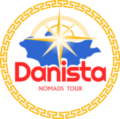The Bactrian camel (Camelus bactrianus), also known as the Mongolian camel or domestic Bactrian camel, is a large even-toed ungulate native to the steppes of Central Asia. It has two humps on its back, in contrast to the single-humped dromedary.[a] Its population of 2 million exists mainly in the domesticated form.[2] Their name comes from the ancient historical region of Bactria.[3] Domesticated Bactrian camels have served as pack animals in inner Asia since ancient times. With […]
Mongolian shamanism (Mongolian: Бөө мөргөл — Böö mörgöl), more broadly called the Mongolian folk religion,[1] or occasionally Tengerism,[2][note 2] refers to the animistic and shamanic ethnic religion that has been practiced in Mongolia and its surrounding areas (including Buryatia and Inner Mongolia) at least since the age of recorded history. In the earliest known stages it was intricately tied to all other aspects of social life and to the tribal organization of Mongolian society. […]
Mongolian cuisine is much influenced by the continental climate that dominates the region, and also a bit by the Russian and Chinese cultures. Meat and dairy form the staple diet of this nomadic cuisine, with the use of vegetables being limited. The meat of horse, yak, beef, lamb and even camel is consumed as delicacies. […]
Western Mongolia is a region in Mongolia covering the provinces (or Aimags) of Bayan-Ölgii, Hovd, Uvs, and Zavkhan. It is the most remote region of the country with paved roads from the capital, Ulaanbaatar, ending 320 km (200 miles) before reaching the eastern most point of Zavkhan. It is also the most ethnically diverse, mountainous, and scenic region of […]
Kharkhorin (Mongolian: Хархорин) is a town and sum (district) center in Övörkhangai Province in Mongolia. The sum population was 13,828 (1994), 13,964 (2000), and 14,765 (2017). The population of Kharkhorin town itself was 14,765 in 2017 and covered an area of 20.5 km2. Kharkhorin is located at the lower end of the upper valley of the Orkhon River which is included within UNESCO’s World Heritage […]
Footage of Kazakh eagle hunters riding on horseback across the vast landscape of Mongolia’s Altai Mountains inspired gasps of awe when shown as part of the BBC’s Human Planet series in 2011. Clad in animal skins to ward off the sub-zero temperatures, the weathered-faced father and son each rode with one arm outstretched and a […]
Horse riding in Mongolia Horse riding in Mongolia is the truly best way to experience nomadic Mongolia. Nowhere in the world are horses more integral to people’s daily lives than in Mongolia. Horses play a large role in the daily life of the Mongols. Horses are used for transportation, herding, hunting, and entertainment (horse racing). […]
10 FACTS ABOUT MONGOLIAN GOBI DESERT The Gobi Desert, covering nearly 1.3 million square km of total land area, is the largest desert in Asia and the fifth largest in the world, presiding both in China and Mongolia (Mongolia Tours & Guides). The name simply translates into Waterless Place in Mongolian, while Chinese people occasionally refer to it […]
15 Extremely Helpful Airport Tips to Make Travel Easier
Before you scan all important documents (or simply take a photo of them), such as passport, ID, driving license, international health care, or visas. Send these copies to your email account or save them online somewhere, e.g. Google Drive or Dropbox, so you can access them from anywhere at any time.










